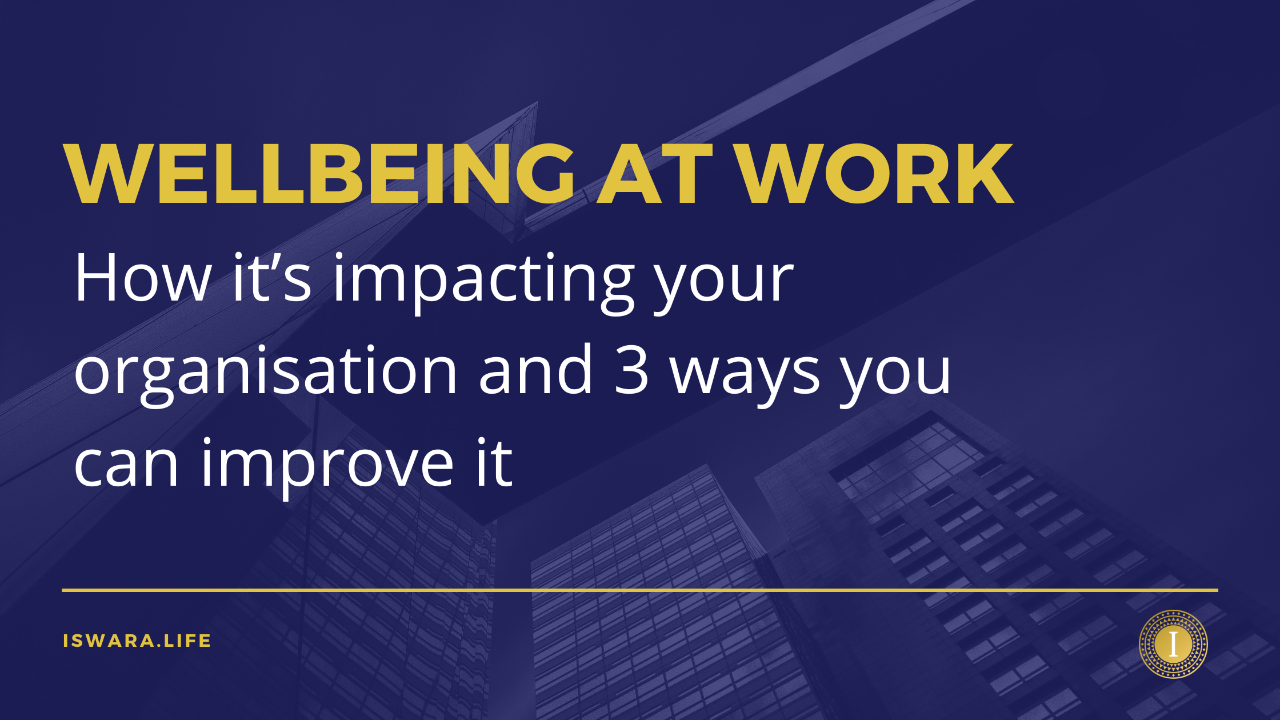
Workplace mental ill-health in Australia cost $12.8bn in 2015-16 (3) and by 2030 projected mental health-related claims are set to double (19) leaving organisations and HR Managers faced with increasing pressure to address mental wellbeing in the workplace.
A lot of Australian organisations and HR professionals want to do more, but it can be difficult to know where to start.
If you’re a HR manager or leader wanting more guidance on how you can start improving employee wellbeing, this post will provide you with three strategies to help create positive outcomes for your people and your organisation.
Mental health and employee wellbeing are a top priority for Australian HR Managers
A recent study supported by the Australian HR Institute (AHRI) asked HR practitioners and consultants in Australia about the recent and future priorities dominating HR (6).
Their responses showed:
- recruitment;
- retention;
- mental health; and
- employee wellbeing
dominated the past five years and are expected to dominate the next five years.
When asked about the most critical HR issues confronting organisations, employee wellbeing was among the top three responses (6).
Evidence shows that prioritising mental health in the workplace has significant benefits for individuals and organisations (4) (19). In fact, $1.00 spent on workplace mental wellbeing will result in a ROI of $2.30 (4).
Few organisations currently have formal mental health and wellbeing strategies in place (19) however, for the most part, organisations want to have a mentally healthy workplace, they just need to know what evidence-based measures they should take to achieve this (5).
3 Strategies to Improve Employee Wellbeing
Research has shown that the best returns seen from organisations investing in the mental health of their employees are from those organisations who focus on prevention and early intervention compared to reactive approaches (19).
There are a range of prevention focussed strategies organisations can take. The 3 strategies below can help improve the wellbeing of your employees and bring significant benefits to your organisation.
1. Prioritise mental health as much as physical health and safety
In recent decades, Australian organisations have successfully prioritised physical safety and have seen considerable improvements in physical safety risks in the workplace (19).
Organisations that prioritise psychological health and safety to the same degree as physical safety help improve their workplace mental health and productivity (5).
Applying the same risk management approach to psychological health and safety that your organisation applies to physical health and safety, helps to improve the mental health of your workplace and supports positive business outcomes (5).
2. Effective job design
While promoting a mentally healthy workplace is more complicated than addressing job design alone, there is strong evidence that effective job design enhances employee wellbeing and productivity levels in the workplace (19).
Job design includes:
-
The level of job demands and the control (level of decision-making authority) employees have over them
Research shows that jobs where the job demands are high, but the control is low, are the jobs with the greatest risk of mental ill health. Jobs that are designed to provide employees with a high level of job control, such as flexible working, access to support, feedback and learning opportunities, can reduce the impacts of high demand jobs (19). - Employment characteristics
Employment characteristics such as working hours, modes of employment (temporary, contract, full time etc) and relationships with colleagues have been shown to have significant impacts on mental health (19).
- The employee’s job resources
Positive job resources including providing employees with authority, autonomy and support from their leader can impact employee wellbeing (19) (20).
Organisations who take the time to re-design and reconfigure roles with effective job design in mind can benefit the mental wellbeing of their workforce, particularly when employees are engaged in the process (19).
3. Programs and tools that build resilience and improve wellbeing
Studies have confirmed the connection between resilience and workplace stress and wellbeing, with results showing that resilient individuals experience lower stress and report higher wellbeing (11).
Providing employees with access to training, programs and tools that support them to build personal resilience and learn techniques to reduce stress, can improve employee mental wellbeing (19).
There is a growing focus on the role Australian organisations can play in maintaining the mental health and wellbeing of their workforce. Investing in employee mental health and wellbeing is a sound business decision which leads to increased productivity and business outcomes.
At Iswara, we provide evidence-based mental fitness and wellbeing programs to empower organisations and their people to reach their potential.
Our leading corporate wellbeing program, “Thriving Minds”, provides your organisation with 24/7 access to easy-to-use digital strategies and tools that reduce stress and increase overall wellbeing so your people and your business can thrive.
To find out more, head to our website
References
- State of the Global Workplace 2023 Report by Gallup
- 2021 National Survey of Mental Health and Wellbeing (ABS 2022a)
- Mental Health Australia & KPMG (2018)
- Creating a mentally healthy workplace - PWC (2014)
- Productivity Commission Inquiry Report Mental Health Volume 1 No. 95, 30 June 2020
- The State of the Human Resource Profession in Australia 2022 Report
- Stress in the workplace | APS (psychology.org.au)
- https://www.beyondblue.org.au/mental-health/work
- https://www.who.int/news-room/questions-and-answers/item/ccupational-health-stress-at-the-workplace
- https://www.apa.org/topics/healthy-workplaces/work-stress
- https://www.ncbi.nlm.nih.gov/pmc/articles/PMC9657361/#:~:text=Studies%20have%20confirmed%20the%20relationship,of%20work%20on%20personal%20life.
- https://positivepsychology.com/what-is-resilience/
- Resilience—a survival tool for the nineties - Giordano - 1997 - AORN Journal - Wiley Online Library
- https://onlinelibrary.wiley.com/doi/10.1111/j.1365-2648.2007.04412.x
- https://royalsocietypublishing.org/doi/10.1098/rstb.2004.1512
- https://psycnet.apa.org/doiLanding?doi=10.1037%2F0022-3514.86.2.320
- https://aornjournal.onlinelibrary.wiley.com/doi/abs/10.1016/S0001-2092%2806%2962942-6
- Resilience in the Workplace: How to Be Resilient at Work (positivepsychology.com)
- CEDA 2022 Report: MENTAL HEALTH AND THE WORKPLACE: HOW CAN EMPLOYERS IMPROVE PRODUCTIVITY THROUGH WELLBEING?
- https://www.ncbi.nlm.nih.gov/pmc/articles/PMC10323440/
Stay connected with news and updates!
Join our mailing list to receive the latest news and updates from our team.
Don't worry, your information will not be shared.
We hate SPAM. We will never sell your information, for any reason.

